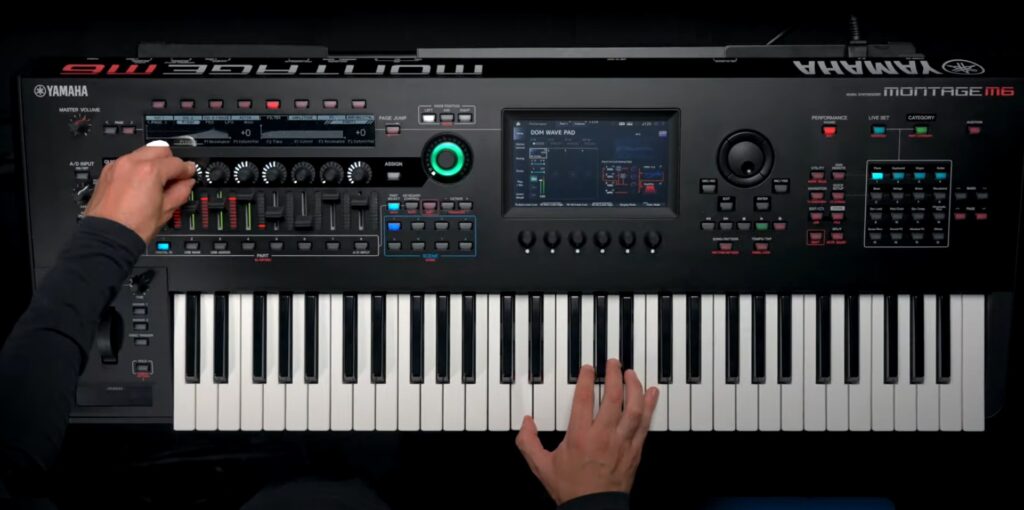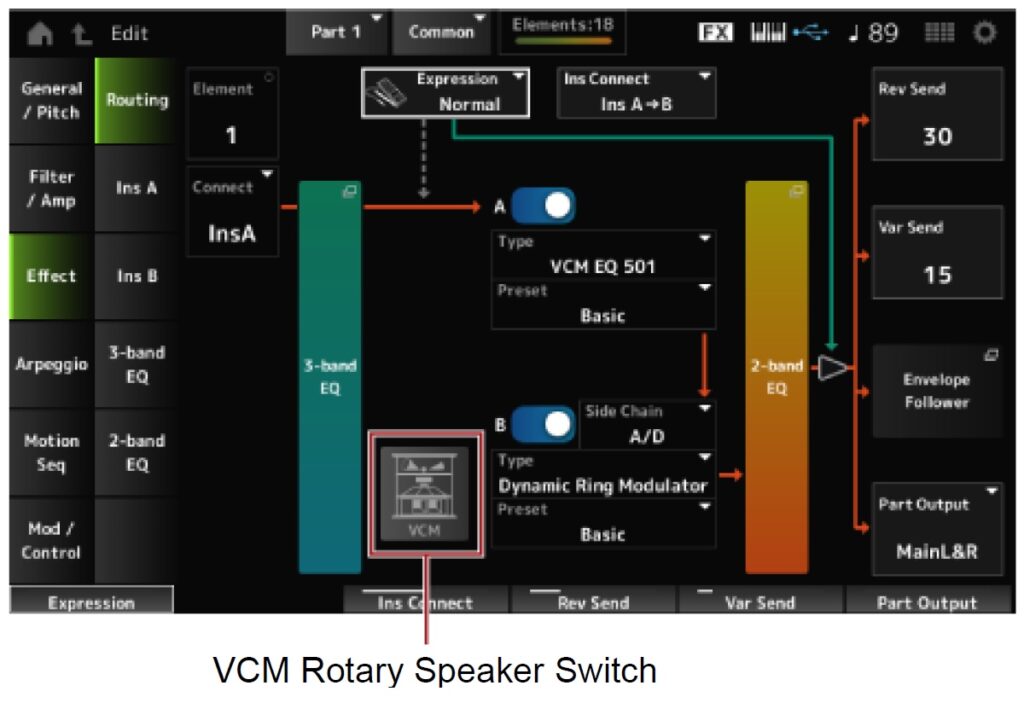Well, my site got hammered last night while I was trying to live blog a few details from the Yamaha Montage M documentation. Thanks for visiting SSS.
By now, everyone has downloaded the documentation and watched Blake’s Take on the Montage M. There isn’t a need to rehash that information here. Below are a few comments which are “value added”, I hope.
Bread and butter
The Montage M sound demo should assure long-time users that Montage M continues to cover the basics. I don’t think the AN-X demos in the video will get pulses racing among the cultists. If anything, the Montage M is the all-rounder that we wanted six years ago!
Those prices
Montage M pricing is in premium keyboard territory:
Model MSRP MAP
----------- ------ ------
Montage M8x $4,999 $4,500 USD
Montage M7 $4,499 $4,000 USD
Montage M6 $3,999 $3,500 USD
Minimum Advertised Price (MAP) is what you will see on-line, of course. I wouldn’t expect much wiggle room for negotiation while the Montage M is hot. You might be able to find an open box unit after the Fickle Freds return ’em.
Even the M6 is a step up from the gen 1 Montage6. Gulp.
Elementary
Montage M AWM2 Normal Parts may have up to 128 elements. The old limit was eight. This gives punters a way to create massive stacks within a single element. Or, you can shrink those multi-part performances into a single part. I did this recently in order to make a MODX Performance Seamless Sound Switching (SSS) eligible.
Getting rid of the old limit enables single-part, multi-strike pianos with more than eight velocity levels — among other uses.
Me, the tech nerd, wonders if removing the limitation is software-only or if the AWM2 hardware was revised (i.e., SWP71). Get out your screwdrivers!
AWM2 polyphony is split between factory presets and user waveforms. Knowing what little I do know about SWP70, Yamaha may have enabled the second, unpopulated waveform memory channel in the Master SWP70. Or, maybe they went the Genos way. Montage M may have two SWP70s still; AN-X is either an SSP3 or SWX09. Screwdrivers, anyone? Take good pictures while you void your warranty.
The rotary speaker effect
Montage M gets the Virtual Circuit Modeling (VCM) rotary speaker effect which was added to Stage YC in the V1.2 update. The algorithm has three main variations:
- VCM Rotary Speaker Classic: Standard rotary speaker effect
- VCM Rotary Speaker Overdrive: Simulates the distorted sound of a rotary speaker with a transistor preamp connected
- VCM Rotary Speaker Studio: With three-dimensional rotation
I’m still trying to get my head around the VCM rotary effect routing. It appears in the insert signal chain (below), but is listed as its own effect block in the Data List PDF.
There is also a limitation. The VCM Rotary Speaker Switch parameter is available only for Part 1. According to the Operation Manual, “Only Part 1 of the VCM Rotary is enabled. All other Parts cannot be used.” Hmmmm.
Fortunately, you can put all of the drawbar elements into a single part (i.e., Part 1). That should phase-align the rotary speaker across elements. Drawbar sounds are generated by AWM2, FM-X or AN-X. No modeling.
I still can’t find a satisfying effect routing diagram in the manuals. Grrr. Further, the routing screen above, IMHO, is a jumble.
Them pianos
The Montage M is fat with pianos: CFX, C7, Nashville C3, CF3, S6, S700, Imperial, Hamburg Grand, U1 Upright, Felt. A few of these pianos were released as a parting gift to existing Montage (and MODX) users. On voices alone, CP88 is in bad need of an upgrade.
I haven’t spotted any significant additions to the EP line-up — yet. I need to cross check the Montage M waveform list against gen 1. I’m looking for improvements to the orchestral instruments, too. Frankly, I don’t care about Performances named “Flowerpot Hats” (or whatever) because what the heck do they sound like? They are what they are. 🙂
Doing a thorough comparison takes time and caffeine. I’ll get around to the task someday…
Am I gonna buy one?
“M8x for the pianist”
My primary need right now is a digital piano for practice. I would love to get my hands on a Montage M8x and test drive the new GEX keybed. I want to know how it measures up against GrandTouch (wood plus counterweights) and NWX.
Here’s a few considerations. The price of M8x is comparable to a mid-range Clavinova CLP or CSP. The Clavinova digital pianos have Virtual Resonance Modeling (VRM), Grand Expression Modeling, triple-pedal unit, and built-in sound system. Montage M, at a minimum, demands an external sound system, a robust stand (62 pounds!) and a bench.
There is also the aesthetic side, namely, furniture versus stage instrument. I’m out of studio space and my next purchase will reside in one of our common living spaces, the so-called “dining room.” Guess which alternative wins with spouses? 🙂
Bottomline: The Clavinova digital pianos remain attractive. Yamaha P-525 is an even better value after its bump from P-515, although the visual aesthetic is not as appealing as Clavinova. Just for piano, M8x is a difficult sale.
E.S.P.
The Expanded Softsynth Plugin (E.S.P.) provides an “in the box” version of Montage M.
The Yamaha Montage M series press release has further information about the Expanded Softsynth Plugin (E.S.P.):
MONTAGE M series keyboards come with a download code for the Expanded Softsynth Plugin (E.S.P.) for MONTAGE M, which is a software synthesizer (VST3, AU) that can replicate all MONTAGE M series sounds, offering more powerful stage and studio integration.
We are planning on releasing E.S.P. in early 2024. The first version will have MONTAGE M sound, while being limited to basic editing. The full version is planned for release in summer 2024.
Notice that the first version will be limited to basic editing.
I suspect that E.S.P. started out as a prototyping and development tool for Montage M. Shoot, Montage runs on Linux, why the heck not? Mid-stream, the team decided to productize E.S.P. A good idea™.
However, I doubt if E.S.P.’s polyphony spec will be very good. It’s hard to replace several hundred hardware tone generation channels and effect DSP units with software. You’re still going to want to buy hardware. Just sayin’…
Copyright © 2023 Paul J. Drongowski


